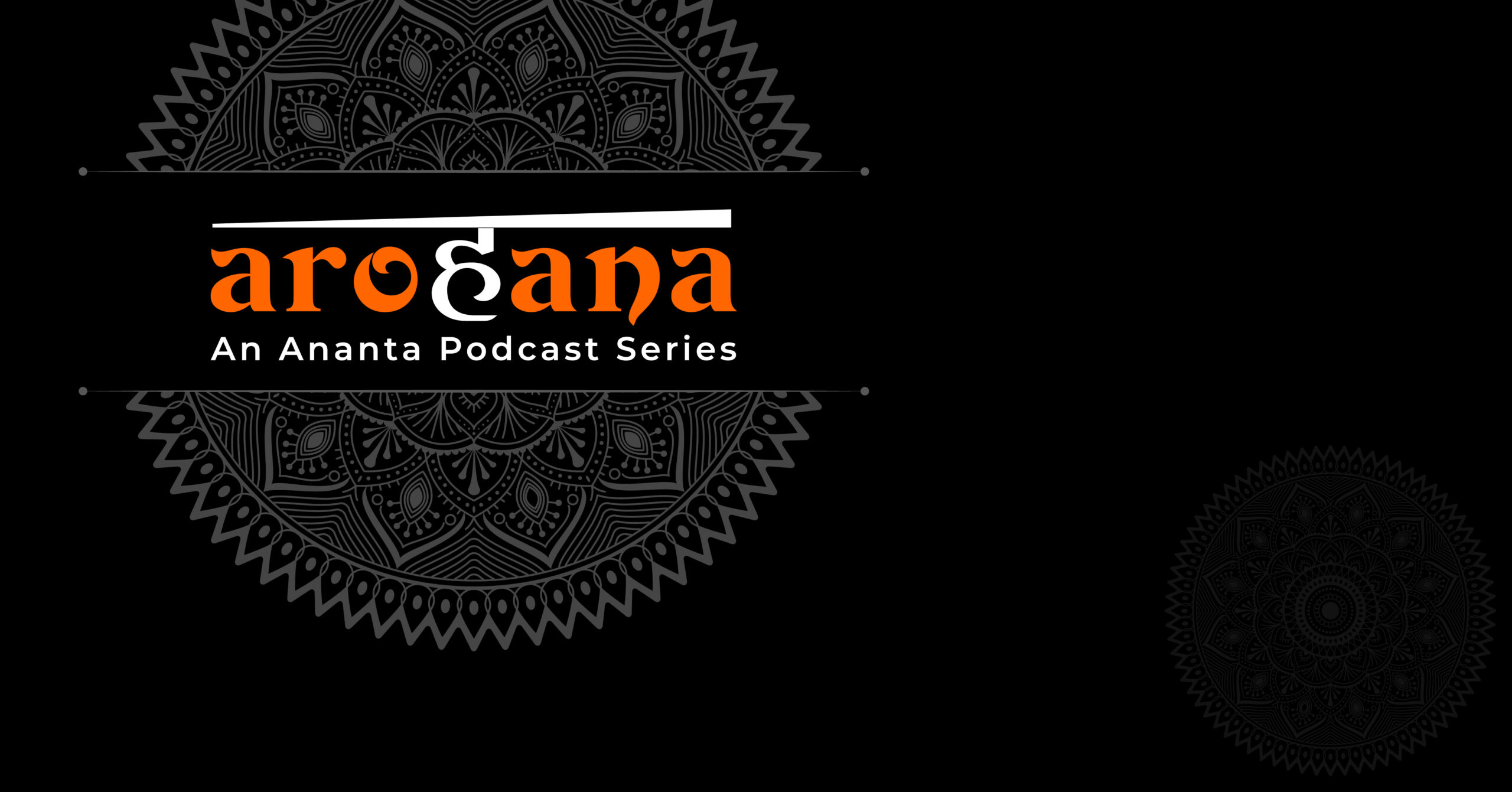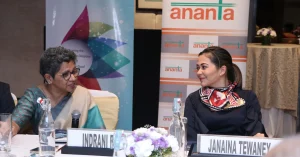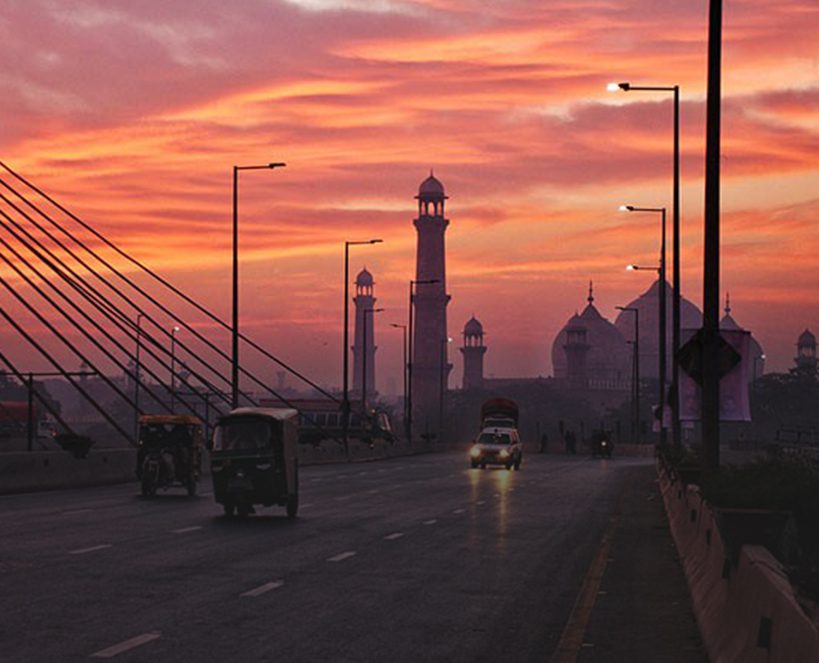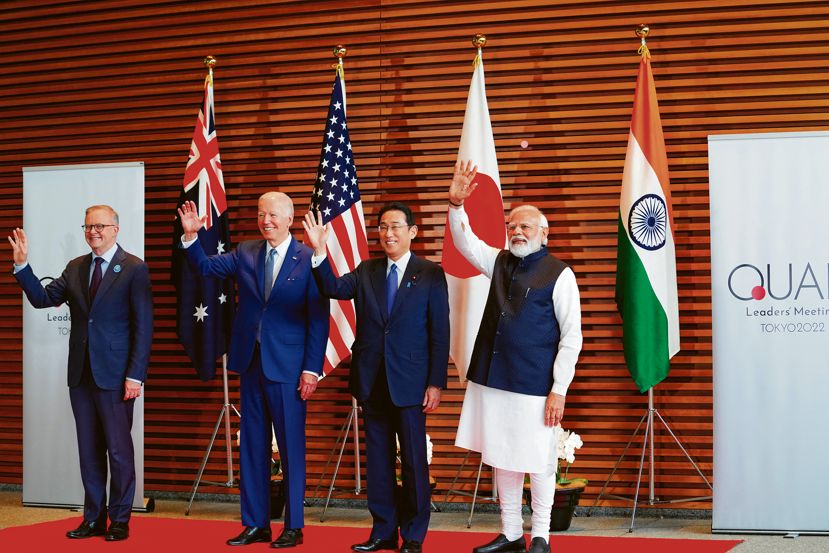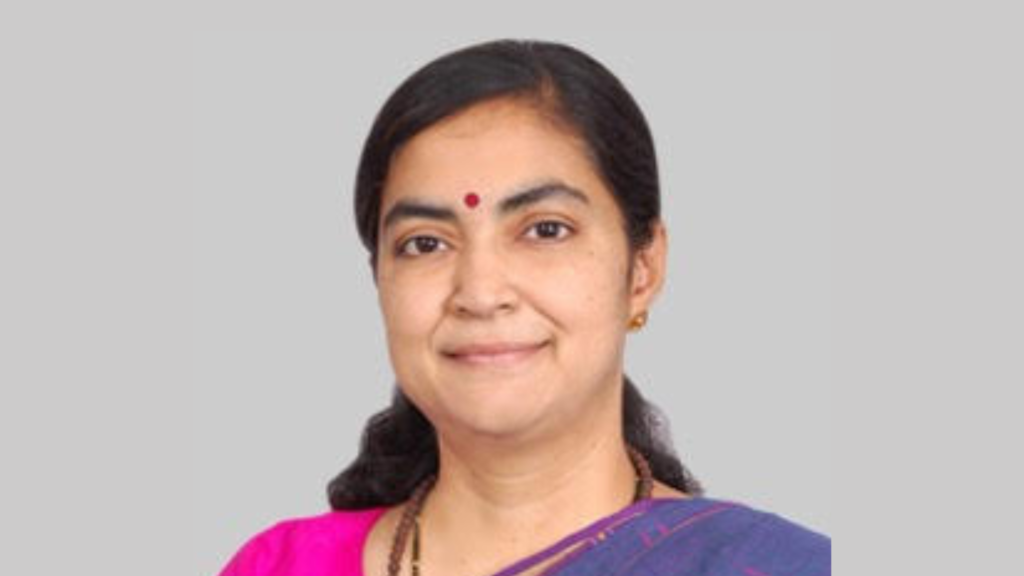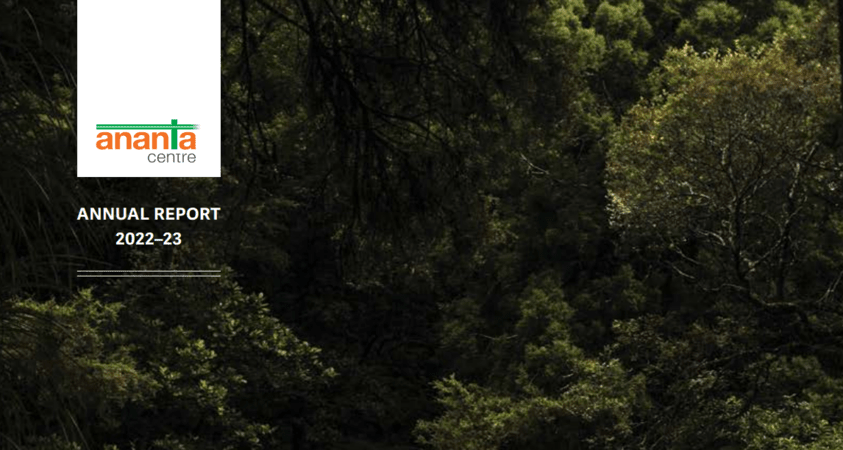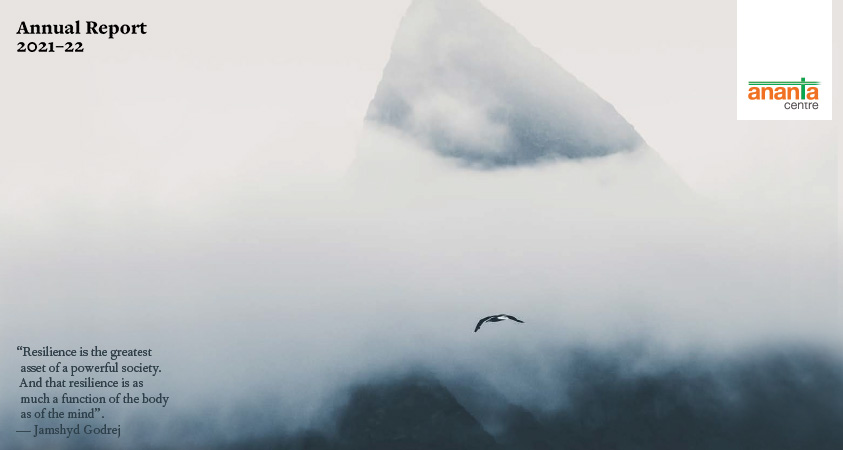H I G H L I G H T S
• Rerating of economic recovery prospects
• Most agencies upgrade India growth estimates
• Is India in a recession? Not really!
• The other upsides of the Indian economy
• A seven-pronged strategy from the RBI
• Industrial output bounces back, but will it be sustained?
• Retail inflation down, but no relief for RBI
• No cheer from exports, but industrial demand picks up
• Direct tax collections recover smartly, but will miss target
• Fresh momentum for Air India privatization, easier norms likely
• Ghost of retrospective taxation makes a comeback
Rerating of economic recovery prospects
The outlook for the Indian economy has turned a little more positive. The monthly report on the state of the economy, released by the Reserve Bank of India (RBI) in December offered a mixed picture, but the overall trend was optimistic. “Abstracting from the inherent flux in high-frequency indicators, the underlying trend would reveal that the pick-up in momentum of economic activity that commenced with the onset of the second half of 2020-21 is sustained,” the RBI report noted. But the dangers of inflation were still lurking, according to the report and it struck a note of caution : “At the same time, efforts need to be redoubled to excoriate the ‘worm in the apple’ – inflation – before it hurts the impulses of growth that are taking root.”
Most agencies upgrade India growth estimates
India Ratings, a research and rating agency, has projected that the Indian economy in 2020-21 would contract by 7.8 per cent, instead of the earlier estimate of 11.8 per cent contraction. This was in line with the RBI’s own estimate of a contraction of 7.5 per cent in the current year. According to India Ratings, while the Covid-related challenges will not go away until mass vaccination is completed, the economy is rapidly adjusting to a post-Covid world and responding to measures to revive the economy. Giving comfort to such projections was the fact that all the eight high-frequency indicators in November , tracked by Bloomberg News, were steady. S&P Global Ratings has also raised its forecast on India growth in the current year to a contraction of 7.7 per cent, better than a contraction of 9 per cent estimated earlier. The improved outlook is attributed to its assessment that demand in the economy is rising and the Covid infection rate is falling. Another rating agency, Fitch Ratings, raised its forecast for the current year to a contraction of 9.4 per cent, compared to the earlier level of 10.5 per cent. How does the RBI view the growth scenario in 2021-22. Its December monetary policy review indicated that the growth rate in the first half of next financial year could range between 21.9 per cent and 6.5 per cent, with the risks being broadly balanced.
Is India in a recession? Not really!
The head of emerging markets at JP Morgan Bank, Jahangir Aziz, has dispelled a widely held impression that the Indian economy is in recession. According to Aziz, most countries define recession to be a situation where the economy contracts for two successive quarters on a quarter-on-quarter basis. And by that yardstick, India has not slid into recession. It’s true that on a year-on-year basis, the April-June and July-September quarters of 2020 showed the Indian economy to have contracted by 24 per cent and 7.5 per cent, respectively. But, on a quarter-on-quarter basis, the Indian economy contracted by 25 per cent in the quarter of April-June 2020, but grew by 21 per cent in the July-September quarter. Hence, the economy did not contract for two consecutive quarters by the yardstick followed in most countries and, therefore, escaped being in recession. This may be a technical point, but the perspective cannot be completely ignored.
The other upsides of the Indian economy
What are the positives in the Indian economy, according to the RBI report? The absence of the much-feared second wave of the Covid-19 pandemic so far has given a boost to the momentum in economic activities, aided by helpful macroeconomic policies and a faster unlocking and normalisation of the economy. The contractions forecast by various agencies for the full year of 2020-21 are being reduced and if the current pace of recovery is sustained, the fourth quarter of the current financial year may show a higher growth rate than earlier projected. The RBI report notes: “Although still significant headwinds persist on the path to a durable recovery, steadfast efforts by all stakeholders could help in recouping lost incomes and/or putting back India on a faster growth trajectory.”
A seven-pronged strategy from the RBI
But like Aziz noted that the advantage of a recovery could be lost if the government failed to provide the necessary income support schemes for the people, the RBI has also underlined the need for caution and pursuit of prudential economic policies and support measures to nurture the incipient growth signals. One, private investment must be encouraged to turn its focus away from “precautionary and deleveraging” considerations to capital expenditure, capacity utilisation and creation of new capacities. This is because experience suggests that recoveries driven by investment turn out to be durable and can boost both consumption spending and exports. Two, the recent reforms in the farms sector and labour policy need to be harnessed to bolster efficiency and secure productivity gains in the economy in general. Three, it would be important to channel the growing financial savings of households and corporations to productive investments, instead of allowing them to be locked in financial holdings like the Statutory Liquidity Ratio (SLR) and non-SLR paper of banks. Four, steps must be taken to prevent the spread of fear and risk aversion, usually caused by pandemics, so that new opportunities and new avenues for animal spirits could be explored. Five, there will be a need for “efficient, effective and timely supply management, including checking runaway retailer margins and reducing the incidence of indirect taxes on consumers”, which could rein in inflation much before it could neutralise the intended effects of fiscal and monetary stimuli. Six, it is imperative that the governments at the Centre and the states spend more. A revival in capital expenditure by the Centre and the states in the second half of the current year would be critical for maintaining the momentum of economic recovery. The recommendation is important in light of the fact that capital expenditure by the governments in the first half of the current financial year had seen a significant drop. And finally, measures need to be taken to put in place well-coordinated country-wide logistics to ensure a smooth as well as swift distribution of vaccines to all sections of society, so that any further adverse impact of the pandemic on the economy can be ruled out.
Industrial output bounces back, but will it be sustained?
Contributing in no small measure to the optimism about the Indian economy’s recovery was the latest industrial growth figures released in December. The industrial growth figure of 3.6 per cent pertained to October 2020, but what stood out were the facts that the growth rate was an eight-month high and that this was led by a significant expansion in consumer goods, electricity and infrastructure sectors. What’s more, manufacturing with a growth rate of 3.5 per cent returned to the positive territory for the first time since February. October 2020 was a festival month, but it was still a month that was battered by the rapidly rising Covid-19 infection rate in many parts of the country. Remember that October 2019 had seen a contraction of 6.6 per cent in industrial growth and the positive performance of the same month this year was certainly helped by a low-base effect. In September 2020, industrial growth, measured by movements in the Index of Industrial Production (IIP), was 0.4 per cent, the first positive growth figure in the previous six months. April 2020 had seen the steepest contraction of over 57 per cent in IIP. However, the performance of IIP in November is a question mark as analysts believe that the recovery recorded in October may not be sustained. In November 2019, IIP grew by about 2 per cent.
Retail inflation down, but no relief for RBI
There was some respite from the elevation in the inflation level recorded in the last few months. Retail inflation, measured by the Consumer Price Index (CPI), fell in November to a three-month low of 6.93 per cent, compared to 7.61 per cent in October. Retail food inflation also declined a bit to 9.43 per cent, from a high of 11 per cent a year ago. Food inflation in rural areas ruled at 9.57 per cent, while in urban areas, the inflation was 9.1 per cent. Interestingly, the divergence between retail food inflation and wholesale food inflation (roughly equivalent to producer’s prices) widened to a five-month high of 5.5 per cent in November, raising many questions on the efficiency of the retail food chain, particularly in the context of the ongoing farmers’ agitation.
However, the retail inflation rate continued to rule above the Reserve Bank of India’s upper tolerance band of 6 per cent for the eighth consecutive month. In 2016, the government, in consultation with the central bank, had set an inflation target of 4 per cent, with a lower tolerance band of 2 per cent and an upper tolerance band of 6 per cent. The regulations provided that if the retail inflation level stayed at a level lower or higher than the prescribed tolerance band for more than three consecutive quarters, the RBI would be required to submit a report to the government explaining the reasons behind the breach and what steps it planned to initiate to bring the inflation level back within the band. In other words, if India’s retail inflation level stays above 6 per cent in December as well, the RBI will have to explain to the government the breach and the proposed remedial action. Since the inflation targeting regime of 2016, this will be first such breach of the tolerance band for three consecutive quarters. This might also influence the government’s approach to the new targets that it would be required to set from April 2021. The current regime of an inflation target of 4 per cent, with a tolerance band of 2 per cent either way, will end on March 31, 2021.
A report from the RBI on why it failed to adhere to the inflation target band for three consecutive quarters looks likely, going by the RBI’s internal projections. According to its monetary policy review in early December (where the policy rate was retained at the same level of 4 per cent, while the accommodative stance was maintained), retail inflation is projected at 6.8 per cent for the October-December quarter of 2020 and 5.8 per cent for the January-March quarter of 2021. The projection for the first half of 2021-22 is a band of 4.6-5.2 per cent, with risks broadly balanced. But there is a contrary view on the inflation rate from Fitch Ratings. It noted: “We think inflation has now peaked and should start to decelerate rapidly on favourable base effects and an easing of supply disruptions. This should provide room for the RBI to cut interest rates in 2021”. According to Fitch, consumer price inflation would decline to 4.9 per cent in the current fiscal year and ease further to 3.5 per cent in the next financial year.
No cheer from exports, but industrial demand picks up
The 6 per cent growth in exports, recorded in September, turned out to be false signal of an expected and sustainable recovery in India’s merchandise shipments to overseas markets in the following months. The exports growth in September, coming as it did after a decline in six straight months, did not eventually turn the tide as October exports fell by 5.1 per cent and now in November it fell by a higher margin of 8.7 per cent. Exports in November were estimated at $23.52 billion, compared to $25.77 billion in the same month of 2019. Imports, at $33.39 billion, also fell by over 13 per cent in November, taking the trade deficit for the month to a 10-month high of $9.87 billion. However, early signs of an industrial demand recovery became noticeable in India’s non-oil, non-gold imports. These imports, which are a proxy for industrial demand, fell by 1.67 per cent in November, much lower than the fall of 5 per cent recorded in October. Analysts attributed this to the festival demand and a rise in commodity prices. Any sustained recovery in non-oil, non-gold imports should augur well for industrial growth in the coming months.
Direct tax collections recover smartly, but will miss target
Direct tax collections are a reliable indicator of the state of the economy. These have staged a significant recovery by the middle of December, which coincides with the last date for paying the third instalment of advance taxes by direct taxpayers. Total direct tax collections (after refunds) in the period between April 1 and December 16, 2020 were estimated at Rs 5.89 trillion, 13 per cent lower than Rs 6.75 trillion collected in the same period of 2019. The extent of the recovery could be gauged from the fact that direct tax collections by the end of October 2020 were as much as 27 per cent lower than what were collected in the same period of 2019. Clearly, direct tax collections have seen a pick-up in November and in the first half of December. What helped the pick-up was largely a 33 per cent increase in advance tax collections for the third instalment. The increase in advance tax collections was much higher at 50 per cent for the third instalment of corporation tax and this is an indication of the corporate sector’s optimism about profits in the remaining quarter of the current financial year. In the previous two instalments, advance tax collections had seen a contraction. In spite of the recovery in advance tax collections in the December instalment, the annual direct tax collections would still fall far short of the annual target of Rs 13.19 trillion in 2020-21. With just about three and a half months left in the current financial year, the direct tax collections till December 16, 2020 were only 45 per cent of the annual target. It would be an uphill task for the government to come anywhere near the direct tax collection target for the full year of 2020-21. A similar trend is being seen in central goods and services taxes and Customs. Only excise duty will buck this trend, where the collections would be much higher than the Budget target, thanks to the increase in taxes the Centre had imposed on petrol and diesel early in the current year, taking advantage of the prevailing moderate prices of crude oil.
Fresh momentum for Air India privatization, easier norms likely
The government has revived its plans for the privatization of Air India, the state-owned airline that has been financially languishing for many years. The deadline for submitting expressions of interest to bid for Air India ended on December 14. Tata Sons has emerged as the front runner in the race for Air India, followed by other bidders including a US-based fund, Interups, and a consortium of Air India employees. The government is planning to sell 100 per cent stake in Air India, along with its low-cost subsidiary Air Indian Express. In a bid to sweeten the offer, according to news reports, the government is making the terms of the sale easier. For instance, the proposal is to relax the norms under which the new owners of Air India could downsize the airline’s surplus employees. The relaxation in the norms is expected to be justified on the grounds of Covid pandemic, which led to the grounding a large part of the airline’s fleet rendering surplus many of its employees. Air India has on average 133 employees per aircraft, compared the market leader Indigo having only 108 employees for each aircraft. The new owners of Air India, after privatization, may also be allowed to dispose of its assets to become viable. Air India at present has a total fleet of 121 aircraft, including 78 narrow-body Airbus A320s and 43 wide-body Boeing 777s and 787s. Of these, 25 narrow-body aircraft and 15 wide-body aircraft have remained idle since the Covid-19 pandemic.
Ghost of retrospective taxation makes a comeback
On December 24, the Indian government filed an appeal with the Singapore Court against the arbitration award that had favoured British telecom giant Vodafone in its taxation battle with it. The dispute is over a tax claim of over Rs 16,000 crore. Earlier in September, an international arbitration tribunal at The Hague had ruled that the tax demand on Vodafone based on a retrospective legislation framed by the Indian government in 2012 had breached the guarantee of fair and equitable treatment under the India-Netherlands Bilateral Investment Treaty. It is clear that the Indian government is exploring all legal option available to it to extract the tax dues from the telecom giant that it believes it is entitled to. The appeal will also mean that a final solution to the Vodafone retrospective taxation problem will not materialize at least for another two years. What may have triggered the government’s decision to file the appeal could be the award of another tribunal on December 23, in which the government lost yet another tax dispute case against energy giant, Cairn Plc over the levy of retrospective taxes on the company. The Permanent Court of Arbitration at The Hague held that the Indian government’s retrospective tax demand on Cairn Plc in 2014 had breached the provisions of fair treatment under the UK-India Bilateral Investment Treaty. The amount claimed and disputed is estimated at Rs 24,500 crore of tax on capital gains that the energy major is alleged to have made while it reorganized its business in India. Now that the government has filed an appeal in the Vodafone case, a similar appeal against the arbitral award in the Cairn case is a foregone conclusion.
Supported by
………………………………………………………………………………………………
(The views expressed are personal)
………………………………………………………………………………………………




